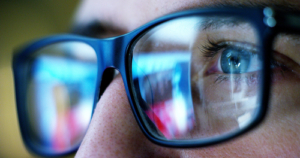Vision at Risk: The Alarming Rise of Myopia Amidst a Pandemic

The onset of the COVID-19 pandemic has led to a surge of discussions around public health, from respiratory illnesses to mental health issues. Yet, one critical aspect that has quietly surged in significance is the prevalence of myopia, or nearsightedness, among children and teenagers globally. This growing concern is highlighted in a recent study published by the British Journal of Ophthalmology, which discovered a disturbing trend: a dramatic increase in cases of myopia since the pandemic began in 2020.
A Global Health Crisis in the Making
The research collected data from 276 studies across 50 countries, involving over 5.4 million participants, revealing that the prevalence of myopia among children has seen a threefold increase in the last three decades. The sudden rise in nearsightedness during and after the pandemic suggests that lifestyle changes—primarily increased screen time and reduced outdoor activities—are key contributors.
Lisa Christian, an associate director at the University of Waterloo School of Optometry, asserts, “Myopia has increased dramatically during the period of COVID. When we’re indoors, we’re focused on near work most of the time. When we’re outside, we’re looking far away, so we’re relaxing our eyes.” This insight emphasizes the importance of visual variety and eye relaxation, both of which are severely hampered by our current lifestyle.
The Critical Role of Outdoor Time
In an earlier study conducted in 2018, the University of Waterloo found that merely one hour of outdoor time could decrease a child’s risk of developing myopia by an impressive 14%. This correlation isn’t unique to Canada; similar studies in Germany and Australia echoed these findings, indicating a universal truth: embracing the great outdoors is vital for our children’s visual health.
Long-Term Health Risks: A Worrying Forecast
The implications of these findings are urgent. Developing eye problems early in life can trigger long-term health complications. A pediatric ophthalmologist from Calgary highlighted the significant risks associated with high prescriptions, noting that individuals with a prescription of -6.00 or greater face increased chances of developing serious conditions such as retinal tears, glaucoma, and cataracts—issues that can ultimately lead to vision loss.
The British Journal of Ophthalmology forecasts that by 2050, over half of children worldwide may be affected by myopia. Such a statistic is not just a number—it’s a call to action. We are grappling with the aftermath of lockdowns that restricted outdoor activity and normal childhood experiences, and the repercussions extend far beyond temporary inconveniences.
Taking Action: Empowering Future Generations
At Extreme Investor Network, we believe in a proactive approach to personal and public health. As parents, educators, and community leaders, it is our responsibility to promote outdoor activities and healthy screen-time habits among children. Encourage your child to take regular breaks from screens, engage them in outdoor sports, or simply go for a walk in nature. Your investment in their health could change the course of their future.
Moreover, we should advocate for policies that prioritize children’s well-being, pushing for programs that facilitate outdoor engagement and limit excessive screen time. Let’s raise awareness about the importance of eye health and take steps towards a future where children can enjoy optimal vision.
Conclusion: Accountability and Awareness
The rise of myopia represents a significant challenge that must be addressed with urgency and compassion. We must hold accountable the societal decisions made during the pandemic that have altered our children’s lives irreversibly. We owe it to the next generation to safeguard their health from preventable crises, ensuring they can see a future worth living.
Join us at Extreme Investor Network as we navigate these pressing issues together, turning our focus toward a healthier and brighter future for all.
By offering actionable insights and a roadmap for improvement, we hope this blog encourages readers to engage more deeply with their children’s health and well-being, emphasizing that while the challenges may be daunting, the power to change lies within our hands.

